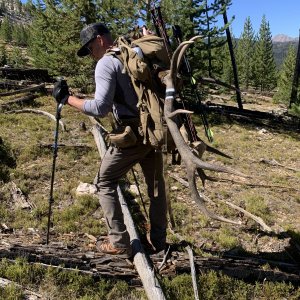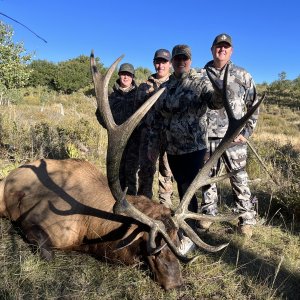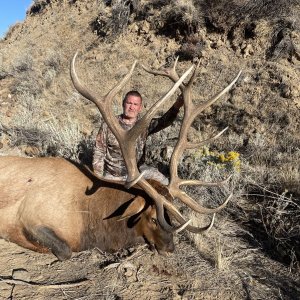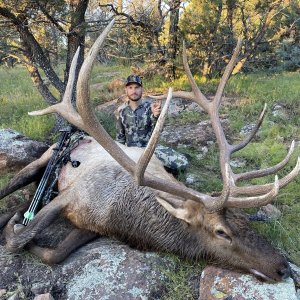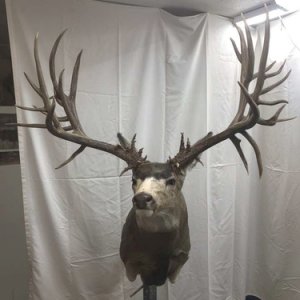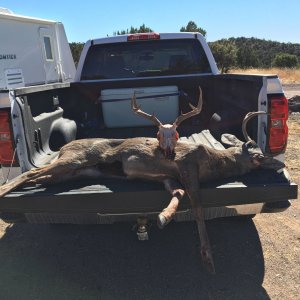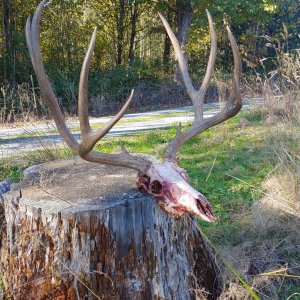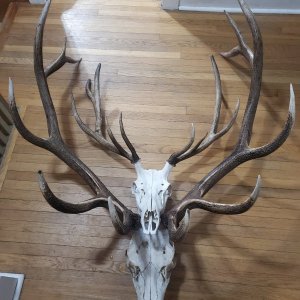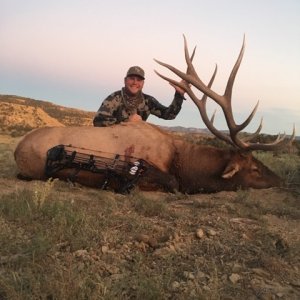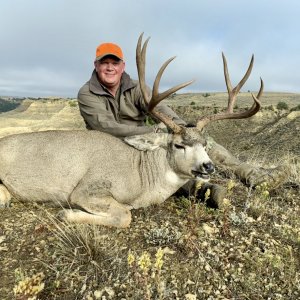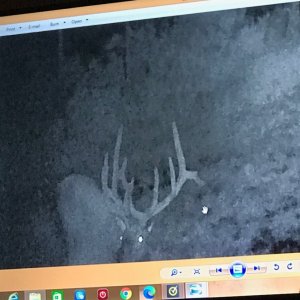gutpile- How did you do that, and can you do it with mine so's I can show Ro another good one? It's on page 2 of the Photo Gallery....thanks in advance if you can.
Robar- I'll pass on what I learned when I drew a Shiras up there, but I promise you, Blank is the expert by far! I guess you and your pop must decide what a 'good' Shiras is to the both of you. For me, the area I drew had strong possibilities for a book animal, so I made that my goal. I checked B&C records for the past 3 years and got a good feel for what makes a good moose. First and foremost, forget the most common mis-conception-that the tines' entire length is counted in the score ( I love a moose with long tines). Each tine, no matter the length, counts as one point. The two strongest factors in a book moose are the measurements of the palm, and this is strongly influenced by the number of brow tines. A solid book moose will have at least 3 brow tines per side, 10-13" wide palm that is 20-30" long. The width of the rack is not nearly as important as the palm length and width; but you hear of people always talking of 50" moose, kinda like 30" mule deer.
So then I came up with my own way of field judging. First I measure a whole loota moose heads, and found that generally their ears are a lot like a mulies-that is, about 22" wide. If I could see obvious daylight from ear to palm, I gave 4" on each side, for a total of 8". If the palm looked double that width, I gave it about 10". That gave me a total width of 40", a good start. So I decided that in the field, the first thing I would look at would be the palm, then the number of brow tines. If these two factors looked good, I would then take a look at the ears and the daylight between. This way, I felt pretty good about being able to judge a moose. And with Blank for advice, who needs a guide? The measurements on my book moose were darn close to what I learned, and he ended up scoring about 151 gross.
HEY BLANK, WHAT'S WRONG WITH YOUR EMAIL???

